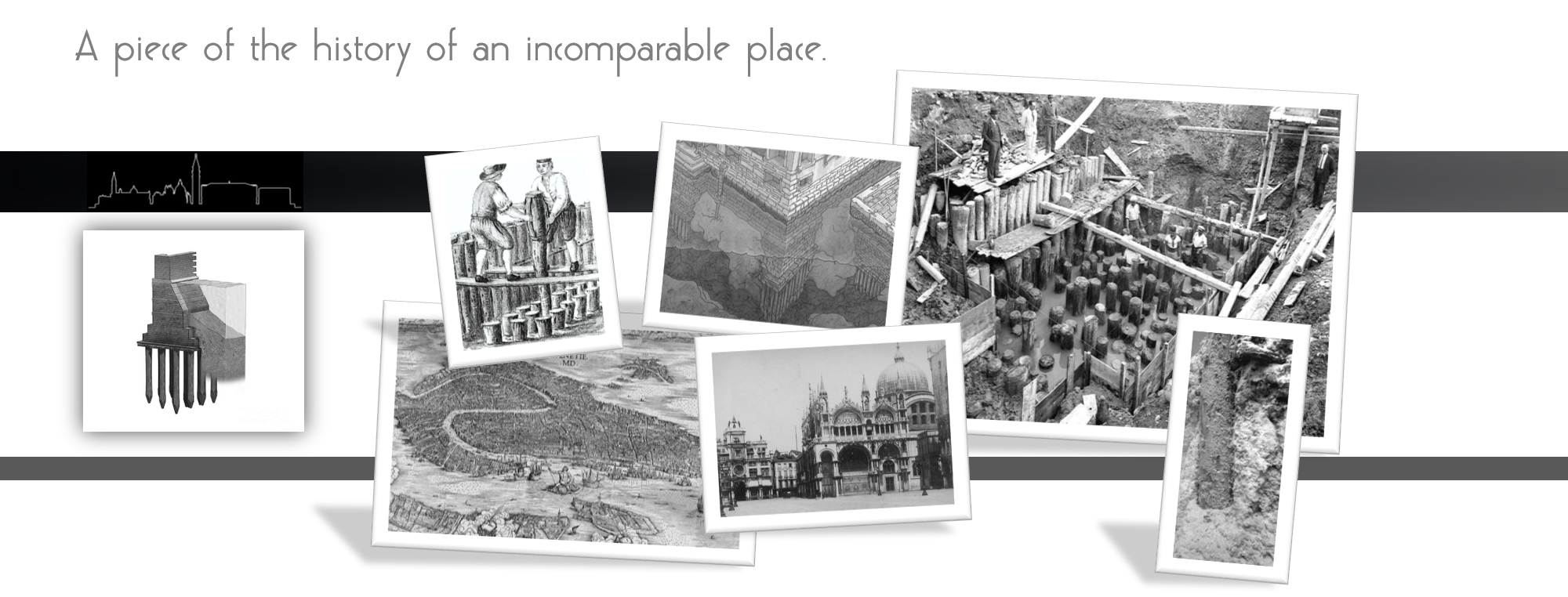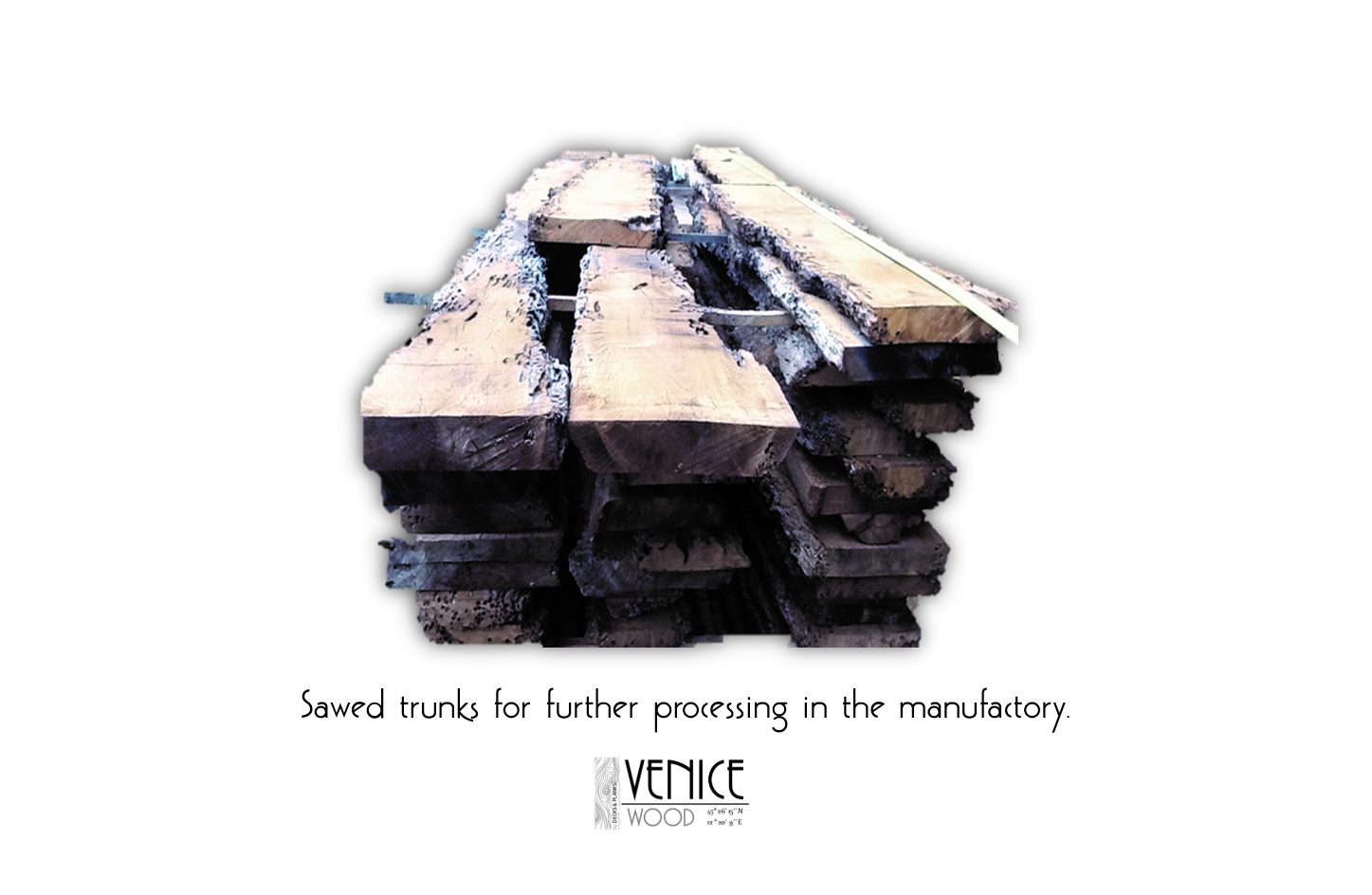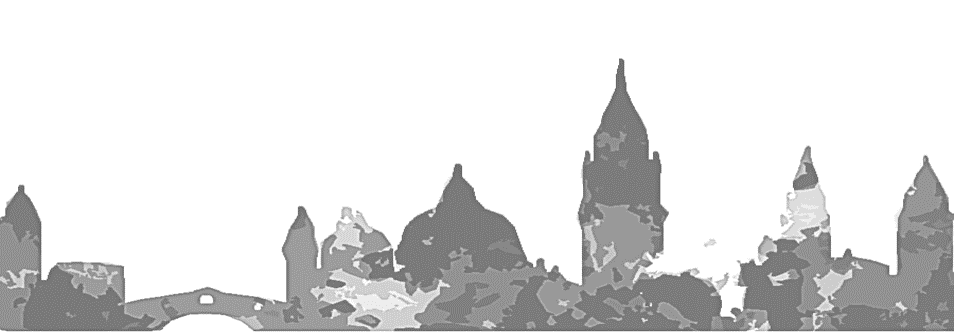
Venice - a city built on tree trunks!
Venice has many faces and many names: city on stilts, city of masks, city of bridges, floating city, city of canals. The streets of Venice are canals on which gondolas ride. Venice is still considered the most romantic city in the world! But how was this Venice built & how did Venice come about? Venice (Italian: Venezia) is at home in water. In the middle of a lagoon of a shallow inland sea, the city or province was built on more than 100 islands. These islands are connected by 400 bridges.

More than 150 canals serve as roads. The large canals are lined with imposing palaces and magnificent buildings that stand directly in the lagoon. It is precisely this uniqueness that gives the city its charm. But how could this Venice - the city on stilts - be built?
In fact, it was long unknown how exactly the buildings, palaces and bridges on the islands of the lagoons were built.
The first settlements on the islands of the lagoon go back a long way, supposedly to the Etruscan era around 700 BC. However, when Venice was founded in 421 AD. specified. In 697 Anafesto was elected the first Doge of Venice. A doge was elected for life and had all the authority to make military and judicial decisions.
Over the centuries Venice developed into a strong trading and maritime power. In the 11th century Venice became an independent republic led by the Doge with the support of the Grand Council.
Unfortunately, nothing remains of buildings from the early days of Venice - early 9th to mid 11th century. The oldest houses, magnificent buildings and buildings in Venice date from the Romanesque period, from the 11th century. One of them is, for example, the Markuskirche. From the Romanesque to the Gothic, Renaissance, Baroque and Rococo, every architectural style is represented in Venice.
The Gothic style in the 13th - 15th centuries had the greatest influence on the buildings of Venice. The Gothic (e.g. with the Doge's Palace) was particularly suitable for the typically Venetian filigree building type, which was determined not least by the particularly unstable building site.
How was Venice built? Foundation and construction of Venice under & over water
What visitors to Venice see are houses, buildings and palaces whose facades seem to merge directly with the canals and the water. If the waters of the Venice lagoon weren't so cloudy, you could actually see stilts and wooden poles that seem to support the buildings.
It was a very curious idea to found Venice in this lagoon. Venice, which is worth protecting and unique in the world, stands on a sensitive, natural construct, where salt and fresh water, ebb and flow, inflows and outflows are in constant interaction.
The whole city of Venice with all its magnificent buildings, churches, houses and bridges stands for the most part on the sandy, muddy bottom of the approx. 100 islands. The sandbanks form the basis and thus the foundation of the city, so to speak. In between there are many, mostly small channels.
The canals of Venice were once small rivers or streams. Venice's main canal - the Grand Canal - runs in the former Brenta river bed. The Brenta brought with it a lot of clay and gravel sediments from the Alps, which have condensed in the lagoon into a tough, muddy subsoil.
Only when the theater "La Fenice" burned down to the ground in 1996 did you finally have the opportunity to dismantle the Venice foundation down to its individual parts and to be able to look at Venice from below.
Venice construction method - How were the palaces and houses built? What does Venice look like under the water? - Italy
In the dense silt of the lagoon, a simple brick wall is sometimes sufficient, which is only about 80 cm in the mud floor. The typical Venetian building is supported by four parallel walls that are perpendicular to the canal and serve as a foundation. These separate walls were "braced" together on all floors by wooden beams. These braced walls formed the supporting framework of the magnificent buildings and buildings.
The canal-side facades rest exclusively on tree trunks. This applies to all buildings on the canals as well as to the bridge structures. We use these old logs to produce the limited-edition floorboards and furniture. Only when a house foundation is renovated is it possible to remove this wood and replace it with new logs and piles.
In order to prevent the walls from slipping along the banks, piles three meters long and up to 30 cm thick were driven into the previously drained subsoil. For the stilts and wooden poles of Venice, the wood species oak was preferred, more rarely alder, maple or the soft poplar as well as larch and pine. The wooden piles were driven into the mud floor with a distance of half a meter.
The gaps were then filled with clay and silt, creating a solid foundation.
This construct creates a compact block of wood and sludge, which becomes buoyant in the water. Even the imposing, heavy, magnificent buildings of Venice can be adequately supported in this way.
Transitional area & construction of the Venetian buildings
Larch boards were nailed to the ends of the wooden posts of this Venetian foundation. It is crucial and important that this part of the wooden construction must always be completely submerged. Without contact with the air, wood has a practically unlimited shelf life. Even microorganisms and industrial waste in the water cannot harm the stilts.
An approx. 1.5 m high intermediate layer was then built on the larch boards. It was either made of bricks or the more expensive limestone from Istria. The same for all buildings, but a 30 cm high plinth made of blocks of the expensive white Istrian limestone, which is extremely waterproof.
This waterproof limestone layer forms a horizontal water barrier. This barrier exactly covered the area between the deepest and highest waterline, which at that time did not exceed 30 cm. The horizontal barrier thus protects the magnificent facade built on it from rising water that would otherwise pull into the walls.
Investigations and underwater photographs of Venice show that the trunks and stakes have not become rotten over the centuries, but on the contrary have become iron-hard. To date there has been no reason to replace the stakes. As long as they always stay under water.
The buildings themselves are largely constructions made of wood, limestone and clay bricks.
All canal-side facades and building fronts stand on stilts, a forest of trees. Another Venetian peculiarity is that the front wall is not rigidly connected to the building. The front wall was attached to the load-bearing walls with self-deformable anchors. This special construction is so stable that it has lasted for many centuries. Since the walls are not rigidly connected, even the earthquakes in the region cannot affect this type of construction.
It is estimated that around 1,160,000 piles were driven into the ground for the construction of the Santa Maria della Salute, and around 12,000 piles for the Rialto Bridge. In this respect, the lagoon city of Venice really stands on a forest of poles, stilts and tree trunks.

Venice, in the city of canals, all traffic takes place on the water. There are indeed streets in Venice, more than 3,000 alleys and alleys to be precise, but these can only be used on foot. Cars, scooters and bicycles are prohibited in the Italian lagoon city.
Venice is a unique city with a unique history: with magnificent historical buildings, numerous art treasures and its very own meanwhile quite morbid, but also romantic charm. The city of Venice is like a painting to walk in. The city with its historic center of approx. 7 km² and the Venice lagoon has been a Unesco World Heritage Site since 1987.
Gondolas used to be the traditional means of transport in Venice.
Today it is just a matter of drifting. Rummage in the small shops for souvenirs. Let yourself be inspired and sparkled by the famous Murano glass. In between stopping every now and then, let the wonderful atmosphere and beautiful houses take effect.
The carefully selected trunks are salvaged by our partners and replaced with new ones.
